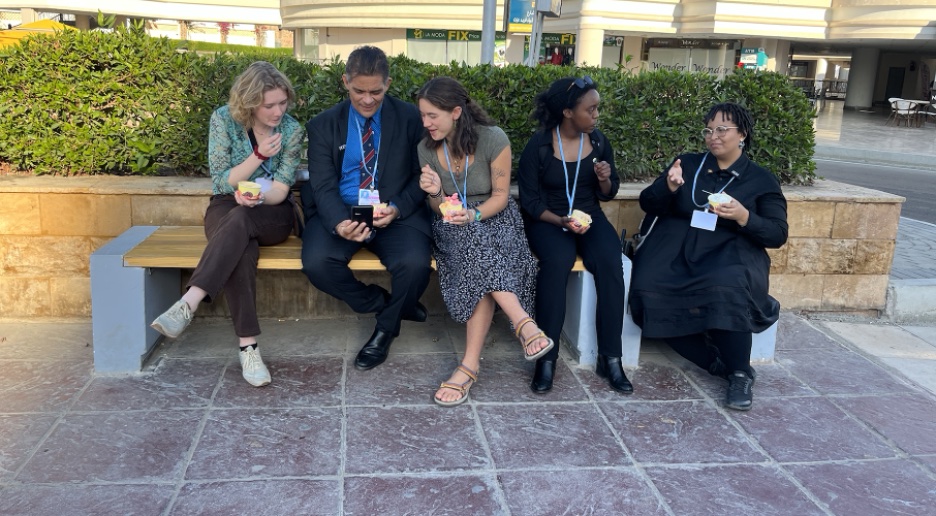By Cecilia Timberg
By the time I got on an Egypt-bound plane, I had sat through half a dozen risk mitigation meetings. The messaging was clear: don’t trust strangers, don’t get estranged from the group, it will all feel so strange.
It was with this fear-forward attitude that I approached my first days in Sharm El Sheikh, Egypt. I was attending the 27th iteration of the Conference of Parties with a team of other Colorado College students. The event, known as COP27, is the yearly United Nations Climate Conference, where countries and environmental organizations meet to make decisions and set goals to protect the planet. I was grateful for the opportunity to have my voice heard in such an important space, and eager to use my position to speak out about climate justice and youth-led action. I was also scared. I had been primed to be scared.
It was with that caution that I only smiled nervously back at a man who sat beside some of my classmates and me on a said “good morning young climate advocates”.
Luckily, he was not put off by my suspicion. He introduced himself as Johann Hoschtialek, a delegate from Grenada, a country in the Caribbean. He then introduced his daughter, Jovana Hoschtialek, who was 17 and the only youth representative from Grenada. She turned to me, waved, and any air of distrust evaporated.
We spent the rest of the bus ride discussing projects, goals, and fears. Because Grenada is an island country, sea level rise puts both its land and its tourist-based economy at risk.
“My dad said that when the sea rises enough, we should buy kayaks and kayak everywhere,” joked Jovana Hoschtialek, “It would be a new form of tourism.”
We learned that COP27 was the Hoschtialeks’ final stop before they launched their project: 195 in 365. They planned to travel to 195 countries in a year to meet youth climate advocates. The goal was to create a unified youth climate movement. The project was ambitious. They understood this but they also knew that, coming from a country that was extremely vulnerable to climate change, it was critical.
We invited them to grab ice cream near our hostel, not ready to say goodbye when their bus stop came. They happily took us up on our offer.
Over ice cream, we spoke more about climate change but our conversation drifted. I exchanged pet photos with Jovana Hoschtialeks and complaints about growing up in a tourist city. She told me about how she was hoping to apply to university after 195 in 365 was over. She wanted to go to England to study theater. She was excited to meet more people who had similar interests to her. She was also scared. I told her that it got better after high school.
As the sun dipped in the sky, we said goodbye to the Hoschtialeks, promising that we would see them again in the coming weeks. We have.
Fear comes naturally to me. I am an anxious person, but also one eager to meet new people. Meeting Jovana and Johann Hoschtialek taught me that there are so many opportunities to connect with people outside of the “safety” of the COP venue.
Since then, I have followed a stray cat to Gemy, an older man from Sharm El Sheikh. He taught me about how to love someone more as you spend more time with them and the value of studying your mother. I have danced with the Loss and Damage delegate from Nicaragua and listened to the ice cream man’s description of how he fell from the moon.
It is easy, when attending the COP, to get lost in the technicalities and despair of the climate crisis. Fear is at the core of the work being done here.
With the people I have met at the periphery of the COP, I have smiled, danced, and laughed despite it all. It is in those moments that I have found my reason for dedicating my life to climate advocacy. It is the people; their stories, landscapes, memories, and futures that are worth protecting.

